Jul 24

Spring Festival is the most important festival in China. All the traditional festivals in China are based on the Chinese lunar calendar and the Spring Festival marks the beginning of the Chinese Lunar New Year. “Guo nian”, the most widely used expression for “Celebrating the Spring Festival” in Chinese, actually means “warding off the monster Nian” when translated literally.
Since the Spring Festival marks the first day of a brand new year, the first meal is considered to hold special significance capable of bringing either good auspices or bad omens. Therefore there are a wide variety of traditions associated with the food that are eaten on this day.
In Northern China, people usually eat Jiaozi or dumplings that are shaped like a crescent moon. It is said that dumplings were first made in China some 1,600 years ago. In Chinese pronunciation Jiaozi resembles the phrase that means transition into the Zi (the first of twelve “eathy branches” ) – thereby representing the start of a new cycle. According to historical records, people from both the north and the south ate dumplings on Chinese New Year’s Day. Perhaps because Southern China produced more rice than any other area, the south gradually adopted other holiday-specific foods pushing the dumplings into the background.
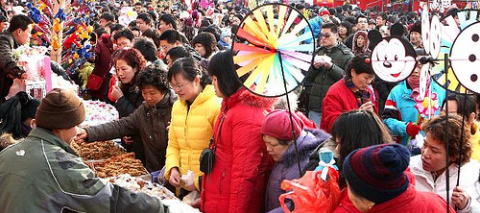
Nowadays, most people in China’s rural areas still hold to these traditional celebrations. However, as the pace of life continues to quicken in the cities, urban residents have taken up new ways to celebrate the Chinese New Year. For example, many city dwellers no longer bother to send out greeting cards. Instead, they use instant messages to convey greetings to relatives and friends
Jul 24
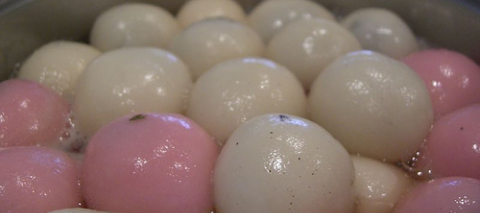
The Lantern Festival (also called Yuanxiao Festival) is on the 15th day of the first Chinese lunar month. It is closely related to the Spring Festival. In the old days, people began preparing for the Spring Festival about 20 days prior to the actual celebration, and end all festivities after the Lantern Festival. Yuan means first, and Xiao means night. Yuanxiao thus came to symbolize the first night of a full moon in a new year. It is traditionally a time for family reunions.
The largest Lantern Festival celebration took place in Beijing in the early decades of the 15th century. The festivities continued for ten days. Emperor Chengzu had the downtown area set aside as a site for displaying the lanterns. The emperor’s particular fondness for lanterns (and his generosity when it comes to acquiring them) turned the area into a marketplace where lanterns were sold during the day, and put on display for all the local people to see in the night. It came to be known as Dengshikou (lantern market) and managed to retain this name all the way down to the present day.
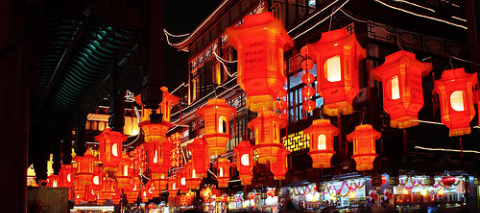
Besides entertainment and beautiful lanterns, another important part of the Lantern Festival or Yuanxiao Festival is eating small dumpling balls made of glutinous rice. These rice balls are called “yuanxiao”s and received their name from the festival itself. It is said that the custom of eating yuanxiao originated during the Eastern Jin Dynasty in the fourth century, and became popular during the Tang and Song periods.
The fillings inside the yuanxiaos are either sweet or salty. Sweet fillings are made of sugar, walnuts, sesame, osmanthus flowers, rose petals, sweetened tangerine peel, bean paste, or jujube paste. A single ingredient or any combination can be used as the filling. The salty variety is filled with minced meat, vegetables or a mixture of them.
Jul 24
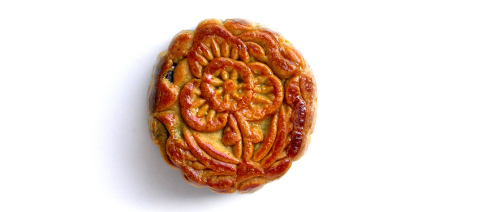
The Mid-Autumn Festival is one of the most important Chinese festivals. The Chinese believe that the seventh, eighth, and ninth lunar months belong to autumn. So the Mid-Autumn Festival falls on the 15th day of the eighth lunar month.
Mid-Autumn Festival celebrations date back more than 2,000 years. In feudal times, Chinese emperors prayed to Heaven for a prosperous year. They chose the morning of the 15th day of the second lunar month to worship the sun and the evening of the 15th day of the eighth lunar month to hold a ceremony to honor the moon. In the western district of Beijing is Yuetan Park, which originally was the site for the Temple of Moon. Every year the emperor would go there to offer a sacrifice to the moon.
The significance of the mid-autumn for the common people is easy to comprehend. Around this time every year, the farmers would have just finished gathering the crops and bringing in the fruits from the orchards. A whole year’s hard work has finally paid off and now it is time to enjoy the fruits of their labor. Mid-autumn thus came to widely celebrated by the average person as the harvest festival, family festival and food festival rolled into one.
People in different parts of China have different ways to celebrate the Mid-Autumn Festival, but all Chinese share one tradition. This is eating the festive specialty: cakes shaped like the moon.
Originally, moon cakes were a family tradition. But gradually they began to appear at markets and stores. The moon cakes made in different parts of the country have very different flavors. For instance, Beijing moon cakes have a thin crust and fillings of bean and jujube pastes that give them a unusually sweet taste.
Suzhou moon cakes are known for their crowd-pleasing secret ingredients. Guangdong moon cakes are perhaps the most delicately made: the fillings are carefully selected and include sesame, almond and walnut kernels, shredded coconut, lotus seeds and egg yolk. So don’t forget to taste all the delicious moon cakes when the Mid-Autumn Festival stops by.
Jul 24
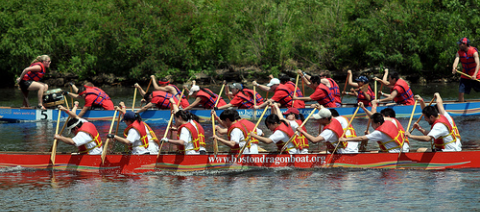
The Duanwu Festival falls on the fifth day of the fifth month of the Chinese lunar calendar. For thousands of years, eating zongzi and racing dragon boats have celebrated Duanwu.
The taste of zongzi, a pyramid-shaped glutinous rice dumpling wrapped in bamboo or reed leaves, varies greatly across China. Zongzi is often made of rice mixed with dates in Northern China because dates are abundant in the area. Eastern China’s Jiaxing County is famous for its pork-stuffed zongzi. In the southern Province of Guangdong, people stuff zongzi with pork, ham, chestnuts and other ingredients, making them very rich in flavor. In Sichuan Province, zongzi is usually served with a sugar coating. Most people still maintain the tradition of eating zongzi on the day of the Duanwu Festival. But the special delicacy has become so popular that you can now buy it all the year round.
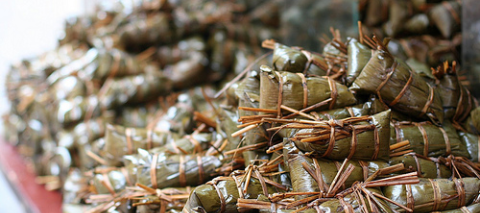
Duanwu is also known as the Dragon Boat Festival, because of the dragon boat races that are held during this time, especially in Southern China. A dragon boat is shaped like a dragon, and is brightly painted in red, white, yellow and black. Usually, a dragon boat is 20 to 40 meters long, and needs several dozen people to row it. Boatmen row the boat to the drumbeats, as the cadence-calling captain standing in the bow of the boat waves a small flag to help coordinate the rowing. Before the race gets underway, a solemn ceremony is held to worship the Dragon King.
Dragon boat racing is quite a spectacle, with drums beating, colorful flags waving, and thousands of people cheering on both sides of the river. Nowadays, it has become a popular sporting activity in Southern China.
Ancient Chinese believed ranger was an antidote for all poisons, and therefore most effective to drive away evil spirits and kill pests. So everyone would drink some ranger wine during the Duanwu Festival while the children would have the Chinese character for King written on their foreheads with ranger wine.








Recent Comments